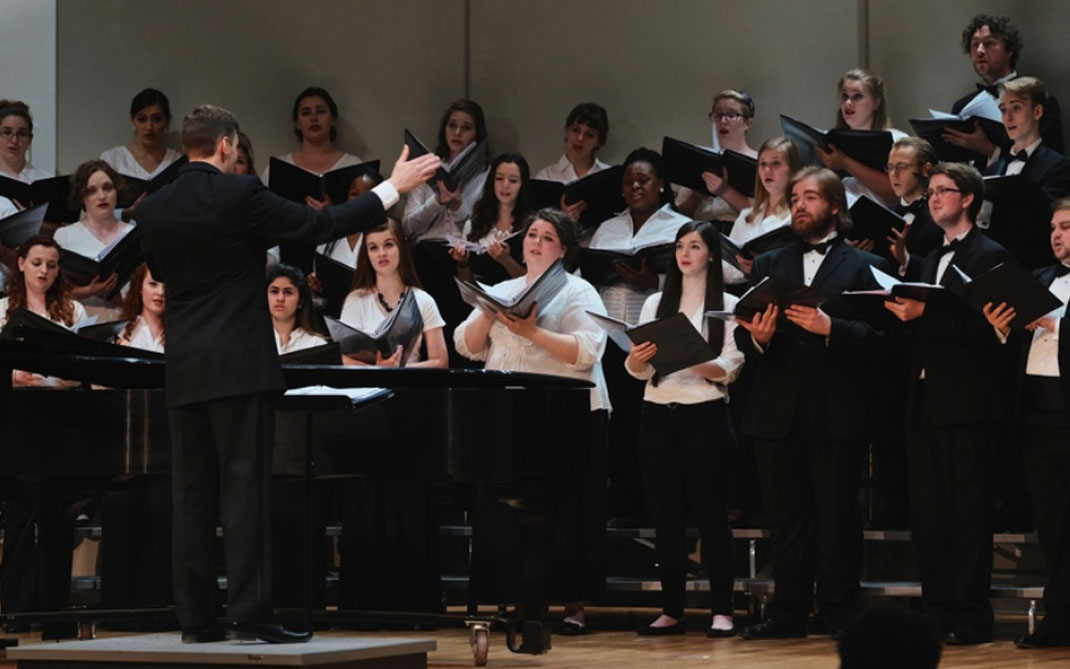Additional Employment Regulation 601
| Regulation 601 | Approved: February 17, 2011 |
| UNIVERSITY OF NORTH CAROLINA SCHOOL OF THE ARTS Additional Employment Regulation Regulation 601 |
|
| Source of Authority: | Office of State Personnel Memoranda dated November 3, 1989 & January 16, 1992 North Carolina Office of State Human Resources |
| Revision Authority: | Chancellor |
| History: | First Issued: February 17, 2011 |
| Related Policies and Regulations: | Compensatory Time Regulation 602; Dual Employment Regulation 606; Occasional or Sporadic Employment Regulation 621; Overtime Regulation 623; Payroll Regulation 307; Secondary Employment Regulation 626; Supplemental Pay Regulation 627 |
| Responsible Offices: | Human Resources Department |
| Effective Date: | February 17, 2011 |
I. Purpose
This regulation outlines the circumstances and the procedures under which an employee subject to the State Personnel Act (“SHRA Employee”) may perform work for the University of North Carolina School of the Arts (“UNCSA”) outside of the employee’s regular position, work schedule, and regularly assigned duties for additional compensation.
II. Scope
This reuglation applies to all SHRA Employees, including probationary, permanent, and time-limited, whether they are subject to the overtime provisions of the Fair Labor Standards Act (“FLSA”) or they are exempt from the FLSA.
Secondary Employment, Dual Employment, and Occasional or Sporadic Employment are governed by separate policies.
This Regulation does not apply to employees exempt from the State Personnel Act.
III. Definitions
A. Additional Employment means that when an employee who holds a position in one area works additional time in another department or classification at UNCSA.
B. Dual Employment means that a UNCSA employee also works for another state university or agency.
C. Occasional or Sporadic Employment means an employee works for UNCSA in a different capacity from their regular employment on an infrequent, intermittent, or irregular basis.
D. Secondary Employment means that a UNCSA employee also works for a non-state employer.
IV. Regulation
A. Generally
1. Additional employment at UNCSA may occur only on a temporary part-time basis when the employee possesses specialized knowledge, skills and abilities not readily available in the local labor market.
2. Additional employment is intended to be used only for a fixed term assignment with specified beginning and ending dates (not over several terms, for example) and not for a continuing need.
3. Additional employment may not conflict with the employee’s regularly assigned SHRA duties or affect performance adversely.
4. Additional employment requires prior approval from the requesting department, the employee’s primary or home department, and if an academic position is involved, the Provost.
5. A permanent part-time employee who is regularly scheduled at least 20 hours but less than 30 each work week cannot be appointed to more than one position at a time. However, under limited circumstances, a single position may involve performing duties for more than one department.
B. Policies Specific to Teaching Assignments
1. Additional employment involving teaching assignment will not be approved if:
a. the teaching assignment is within the reasonable scope of the employee’s regular responsibilities; OR
b. other instructors are available to teach the course; OR
c. an unresolved conflict of interest exists between the temporary teaching and the regular duties
2. Both the head of the employee’s work unit and the dean of the employee’s teaching work unit must approve in advance any dual employment situations involving teaching assignments.
3. Compensation may be paid as a lump sum payment or the employee’s primary position is reduced by the percentage necessary to accommodate the teaching position if the employee chooses to teach on a without-salary basis.
4. If the teaching assignment is considered “occasional and sporadic” under the regulation on Occasional and Sporadic Employment, then the hours worked teaching will not be combined for purposes of determining overtime compensation for an employee subject to FLSA.
5. If the employee is in a position that is full-time and subject to FLSA, compensation for any hours worked (over 40 hours worked per week) in an additional teaching role must be considered overtime and compensated at time-and-one-half the higher of the employee’s hourly rate for the primary full-time job and the hourly rate determined for the teaching. If the teaching is paid in a lump sum, the hourly rate for teaching must be determined.
6. If the employee is in a position that is full-time and exempt from FLSA, the employee may receive additional compensation to teach an authorized course that is otherwise scheduled to be taught if the school or division requesting the teaching certifies that:
a. a reasonable effort has been made to locate an outside instructor and none are available; AND
b. all of the employee’s non-teaching work will be performed.
C. Compensation
1. The requesting department is responsible for the cost of the additional employment salary, overtime pay, additional social security and State retirement contributions.
2. Primary Positions Subject to Overtime
a. An employee whose primary position is subject to the overtime provisions of the FLSA and who works additional employment must be compensated at time-and-a-half the established rate for all hours worked in excess of 40 in a workweek, regardless of the exemption status or classification of the additional employment.
b. When the additional employment provides a different rate of pay from the employee’s primary position, overtime is paid based on the higher of the two rates of pay.
c. The employee must report all hours worked without exception.
d. The overtime premium rate will not apply if the additional employment qualifies as “occasional or sporadic” employment as described in UNCSA’s regulation on Occasional and Sporadic Employment.
3. Primary Positions Exempt from Overtime
a. Generally, an employee whose primary position is exempt from FSLA’s overtime provisions may not be paid for additional work. However, such an employee may be paid for additional work upon certification that a reasonable effort has been made to locate an outside employee with none being available; AND all the additional work is performed on the employee’s own time.
b. When additional employment is allowed as an exception, compensation for the additional employment will be paid at a rate determined by the Associate Vice Chancellor and Chief Human Resources Officer in consultation with the requesting department.
4. Part-Time Primary Position Exempt from Overtime with 30 Hour Weeks
a. A part-time employee working at least 30 hours per week may be compensated for additional work up to the equivalent of 40 hours per week.
b. Additional work will be paid at a rate determined by the Associate Vice Chancellor and Chief Human Resources Officer in consultation with the requesting department.
c. Should the work required exceed 40 hours per week, additional compensation is allowed only in accordance with IV.C.3 of this regulation.
V. Revision History
A. February 17, 2011 – Adopted by Board of Trustees as part of UNCSA Policy Manual
UNIVERSITY OF NORTH CAROLINA SCHOOL OF THE ARTS
Additional Employment Procedures
Procedure 601
I. Additional Employment Requests. Before engaging in any type of additional employment, the requesting department must obtain a completed “Additional Employment Request” form with the signature approvals of:
A. Requested employee’s department head;
B. Head of the requesting department;
C. the Provost (in cases involving teaching assignments); or the Vice Chancellor for Finance and Administration; and
D. Director of the Human Resources.
II. Hourly Rate Determination. If the teaching is paid in a lump sum, the hourly rate for teaching is determined as follows:
A. the employee must make a reasonable estimate of the number of hours usually spent in preparation and in teaching for the duration of the assignment; AND
B. if a lump sum amount for the teaching has been agreed upon, divide the lump sum amount by the number of hours to get an hourly rate for the teaching work.
III. Title. The temporary academic title of Part-Time Instructor will be assigned.





